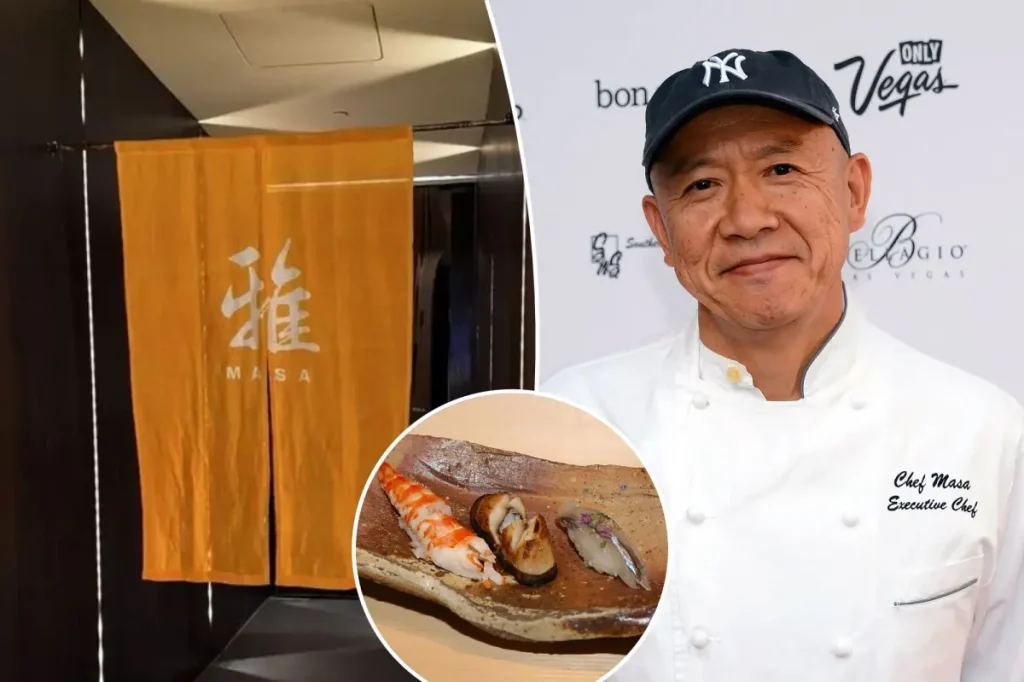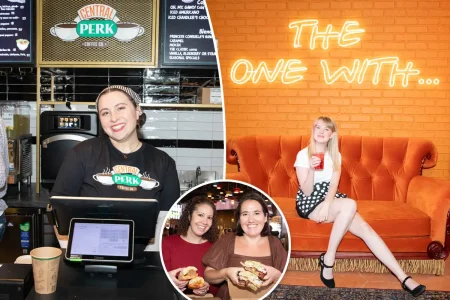The Shifting Landscape of New York’s Elite Sushi Scene
In what food critics are calling the “omakase apocalypse,” New York’s high-end sushi world experienced a seismic shift this week when the revered Michelin Guide downgraded Masa from its prestigious three-star status to two stars. This stunning demotion of Chef Masayoshi Takayama’s Columbus Circle establishment coincided with the elevation of relative newcomer Sushi Sho to the coveted three-star level. For fifteen years, Masa has symbolized the pinnacle of sushi excellence in the city, commanding astronomical prices with its cheapest menu starting at $750 per person without beverages. This exclusive 26-seat restaurant has long been considered untouchable in New York’s culinary hierarchy, making the downgrade all the more shocking to industry insiders and sushi aficionados alike.
The implications of this star reshuffling extend far beyond mere prestige. According to restaurant industry sources, Masa now faces potentially devastating financial consequences from this demotion. While the restaurant’s reservations are currently booked well into the future, one high-end restaurateur familiar with Michelin’s influence predicts the demotion could eventually cost Masa between 25% and 30% of its revenue. The reason lies in Michelin’s enduring influence over wealthy international diners, particularly those from Europe and Asia, who select restaurants based almost exclusively on their Michelin star status. For these elite global diners, the difference between two and three stars can determine whether a restaurant is worth visiting at all, especially when traveling specifically for culinary experiences. Unlike larger establishments that can diversify their revenue streams through events and corporate functions, Masa’s intimate size makes it particularly vulnerable to any downturn in exclusive clientele.
The timing couldn’t be worse for Masa, as New York is experiencing a boom in high-end omakase restaurants offering similar experiences at somewhat lower price points. At least ten Manhattan establishments now offer omakase experiences starting around $400, creating unprecedented competition in this once-exclusive space. Even neighborhood businesses are being replaced by sushi counters, such as Sushi Akira, a 12-seat establishment on East 75th Street offering a 19-course menu for $220. Meanwhile, newly crowned three-star Sushi Sho begins its experience at $450 per person, still expensive but significantly more accessible than Masa’s entry point. This price differentiation becomes increasingly important as more diners question whether Masa’s premium is justified in today’s expanded market of exceptional sushi options.
The ascendance of Sushi Sho represents more than just another competitor—it signals a changing of the guard in New York’s sushi elite. Since opening in the city just last year, Sushi Sho has garnered extraordinary praise from sushi experts and food critics. The influential blogger known as Sushi Legend has declared it “the best sushi restaurant in the country,” while respected food writer and omakase expert Kat Odell went even further, calling it “the greatest sushi counter in the world outside of Japan.” Such emphatic endorsements from industry tastemakers, combined with the Michelin Guide’s ultimate validation, create a compelling narrative that positions Sushi Sho as the new standard-bearer for exceptional sushi in New York. This rapid rise challenges the established hierarchy that Masa has dominated for over a decade and provides diners with a new benchmark for evaluating their premium sushi experiences.
When Masa opened in 2004, it revolutionized New York’s dining scene by offering an authentic, high-end Japanese experience that simply didn’t exist elsewhere in the city. The restaurant’s astronomical prices were justified by its uniqueness and uncompromising standards—importing fish directly from Japan’s Tsukiji market (now Toyosu), serving rare and exotic ingredients, and providing an intimate dining experience curated by Master Chef Takayama himself. However, as omakase dining has evolved from a novelty to a fixture in New York’s culinary landscape, with dozens of establishments now offering similar experiences, the justification for Masa’s premium pricing has come under increasing scrutiny. What was once revolutionary has become, if not commonplace, then at least more widely available, creating an environment where price comparisons are inevitable and value propositions are questioned more closely.
The most sobering assessment comes from Kat Odell, who directly challenges the notion that Masa’s pricing remains justified in today’s market: “Under no circumstance does one in New York need to spend $1,000 per person to have a special sushi meal. I’ll point you to places that in my opinion are better than Masa at nearly half the price.” This blunt assessment reflects the broader reality facing Masa and similar ultra-premium establishments as they navigate an increasingly competitive landscape. The restaurant must now contend not only with its Michelin demotion but also with the fundamental question of whether its experience offers sufficient value compared to its less expensive competitors. For Masa, the path forward requires either justifying its premium pricing through unparalleled innovation and excellence or adjusting its approach to meet the evolving expectations of today’s discerning sushi connoisseurs. Either way, the omakase apocalypse signals the end of one era in New York’s sushi scene and the beginning of another, where excellence alone isn’t enough—it must also be accompanied by perceived value.















